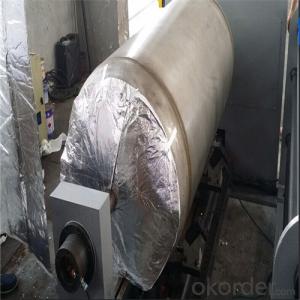Foam Core Sandwich Panels: A Look at the Core of the Material
What are Foam Core Sandwich Panels?
=========================================
Imagine a material that’s lightweight, strong, and versatile. That’s Foam Core Sandwich Panels for you! These panels are a type of composite material made up of two thin, rigid outer layers, typically made of fiberglass, carbon fiber, or other materials, bonded to a lightweight foam core. The result is a material that’s incredibly strong for its weight, making it ideal for a wide range of applications.
Why are they so special?
&8212;&8212;&8212;&8212;&8212;&8212;&8212;&8212;-
Lightweight and Strong
The unique structure of Foam Core Sandwich Panels makes them incredibly lightweight while maintaining high strength. This is due to the foam core, which provides excellent strength-to-weight ratio. The outer layers, often referred to as facesheets, distribute the loads evenly, ensuring the panel’s structural integrity.
Versatility in Use
These panels are not just for one thing; they can be used in various industries, from aerospace to construction, marine, and even in the automotive industry. Their versatility is a testament to their adaptability and usefulness in different environments and applications.
Easy to Work With
One of the best things about Foam Core Sandwich Panels is how easy they are to work with. They can be cut, drilled, and machined just like traditional materials, but with the added benefits of being lighter and stronger. This makes them a favorite among designers and engineers who need to balance aesthetics with performance.
Environmentally Friendly
Foam Core Sandwich Panels are also a green choice. Many of the materials used in their construction are recyclable, and the manufacturing process is designed to minimize waste and environmental impact. This makes them an attractive option for those who are conscious about the environment and sustainability.
Applications of Foam Core Sandwich Panels
&8212;&8212;&8212;&8212;&8212;&8212;&8212;&8212;&8212;&8212;&8212;&8212;&8212;-
Aerospace Industry
In the aerospace industry, every gram counts. Foam Core Sandwich Panels are used in aircraft and spacecraft components to reduce weight without compromising on strength. This helps to improve fuel efficiency and overall performance.
Construction and Architecture
In construction, these panels are used for roofing, flooring, and wall systems. They provide excellent insulation and are easy to install, making them a popular choice for modern, energy-efficient buildings.
Marine Applications
For marine applications, Foam Core Sandwich Panels are used in boat hulls and decks. They offer buoyancy, strength, and resistance to water absorption, making them perfect for long-term use in harsh marine environments.
Automotive Industry
In the automotive industry, these panels are used for lightweight parts like hoods, doors, and trunks. They help to reduce the overall weight of the vehicle, contributing to better fuel efficiency and reduced emissions.
The Manufacturing Process of Foam Core Sandwich Panels
&8212;&8212;&8212;&8212;&8212;&8212;&8212;&8212;&8212;&8212;&8212;&8212;&8212;&8212;&8212;&8212;&8212;-
The process of making Foam Core Sandwich Panels is quite fascinating. It involves several steps, including the preparation of the foam core, the application of the facesheets, and the bonding process. Each step is carefully controlled to ensure the final product’s quality and performance.
Preparing the Foam Core
The foam core is made from a variety of materials, including polyurethane, polystyrene, and polyvinyl chloride. The choice of foam depends on the desired properties of the final panel, such as rigidity, insulation, and resistance to water and chemicals.
Applying the Facesheets
The facesheets are then applied to the foam core. This can be done using various methods, including vacuum bagging, autoclave curing, or even hand lay-up. The choice of method depends on the specific requirements of the project and the desired properties of the panel.
Bonding the Layers Together
Once the facesheets are applied, the layers are bonded together using heat and pressure. This ensures a strong bond between the foam core and the facesheets, creating a unified, structurally sound panel.
The Future of Foam Core Sandwich Panels
&8212;&8212;&8212;&8212;&8212;&8212;&8212;&8212;&8212;&8212;&8212;&8212;&8212;-
As technology advances, the use of Foam Core Sandwich Panels is expected to grow. With their lightweight, strong, and versatile nature, they are poised to play a significant role in various industries, from transportation to renewable energy.
Innovations in Materials and Techniques
New materials and techniques are being developed to improve the performance of these panels even further. This includes the use of nanomaterials, advanced resins, and innovative manufacturing processes that can produce panels with enhanced properties.
Expanding Applications
As more industries recognize the benefits of Foam Core Sandwich Panels, we can expect to see them being used in new and exciting ways. From high-speed trains to wind turbines, the potential applications are vast and varied.
Sustainability and Environmental Impact
With a growing focus on sustainability, the future of Foam Core Sandwich Panels will also involve efforts to reduce their environmental impact. This includes using more sustainable materials in their construction and developing recycling programs for end-of-life panels.
In Conclusion
&8212;&8212;&8212;&8212;&8212;&8212;
Foam Core Sandwich Panels are truly a wonder material, offering a unique combination of lightweight, strength, and versatility. Whether you’re an engineer looking to improve the performance of your project or an environmentally conscious consumer, these panels have something to offer. As we look to the future, it’s exciting to think about the potential applications and innovations that Foam Core Sandwich Panels will bring to our world.

